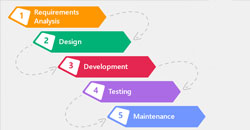General Electric and Motorola developed certification programs as part of their Six Sigma implementation, verifying individuals' command of the Six Sigma methods at the relevant skill level (Green Belt, Black Belt etc.). Following this approach, many organizations in the 1990s started offering Six Sigma certifications to their employees.[9][16] Criteria for Green Belt and Black Belt certification vary; some companies simply require participation in a course and a Six Sigma project.
Six Sigma Black Belt Certification
Six Sigma Black Belts will provide the valuable skills needed to tackle the toughest problems confronting organizations. By coupling the proven Define, Measure, Analyze, DMAIC Process MapImprove, and Control (DMAIC) problem-solving methodology with robust statistical tools, Six Sigma offers a carefully defined roadmap for achieving business process improvements. Six Sigma Black Belt trainees obtain a solid understanding of the tools and methods associated with the Six Sigma approach.
Examination
- 240 minutes duration
- Multiple Choices questions
- Passing marks at 105 correct answers out of 150 questions (70%)
Six Sigma Green Belt Certification
Almost every process within an organization has at least some problems. As a leader, trying to address every problem is impossible. Providing employees with Six Sigma Green Belt training equips them with a logical and objective way to identify, measure, and eliminate those problems. From executive leaders to front-line employees, Six Sigma Green Belt training enhances the way employees approach their day-to-day work.
Examination
- 180 minutes duration
- Multiple Choices questions
- Passing marks at 70 correct answers out of 100 questions (70%)

























